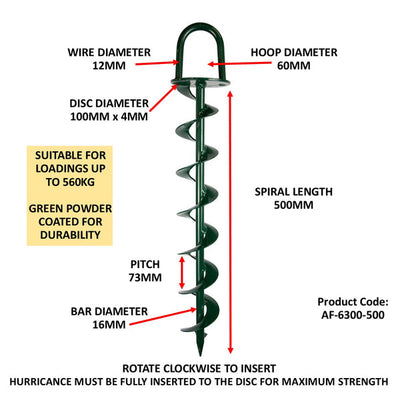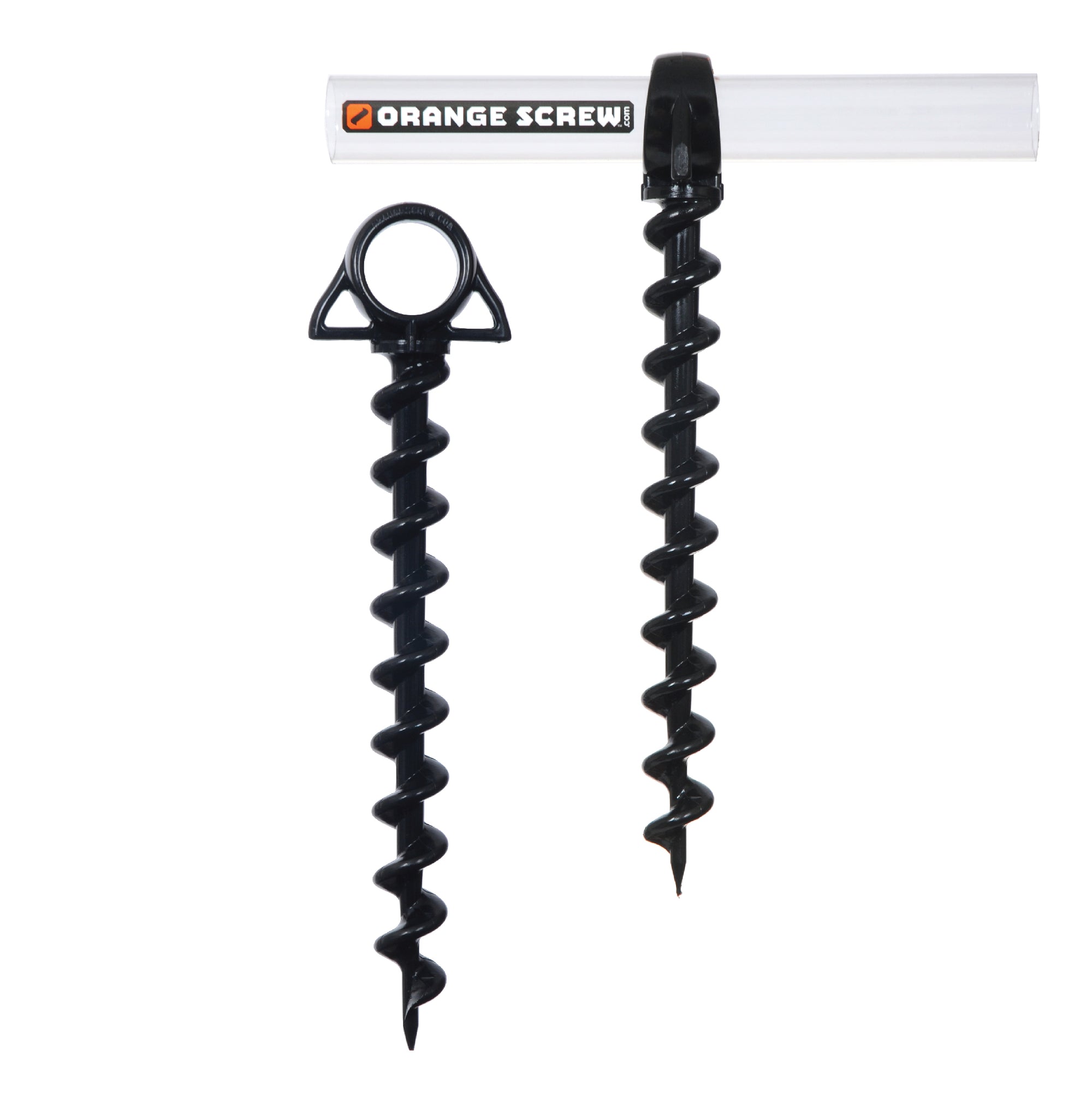Methods a Ground Anchor Can Enhance Security for Different Setups
Methods a Ground Anchor Can Enhance Security for Different Setups
Blog Article
Check Out the Different Kinds Of Ground Anchor for Your Following Task
From auger anchors, which excel in varied dirt conditions, to risk supports designed for momentary installations, the alternatives are many. Furthermore, concrete and screw supports present special advantages in particular scenarios, while deadman supports are tailored for applications requiring resistance to lateral forces.

Auger Anchors
Auger supports are a popular choice in different building and landscaping projects due to their unique layout and reliable securing capacities. These supports contain a helical screw-like shaft that is driven into the ground, enabling a secure and steady hold. The spiral design helps with simple installation and makes the most of resistance versus lateral pressures, making auger supports particularly effective in applications such as secure fencing, momentary structures, and erosion control.
The installment procedure of auger anchors is relatively simple. They can be by hand or mechanically installed, relying on the dimension and needed depth. This versatility enables their use in varied soil problems, from sandy to clayey surfaces. Additionally, auger supports can be quickly eliminated and reused, which adds to their cost-effectiveness and sustainability.
One of the substantial benefits of auger supports is their ability to disperse tons equally across the bordering soil, minimizing the risk of soil disruption and decreasing environmental influence. Furthermore, they are much less susceptible to heaving or loosening up over time contrasted to standard anchoring techniques. Consequently, auger anchors are an excellent option for jobs requiring long lasting and reputable anchoring solutions.

Stake Anchors
When it pertains to securing frameworks in a variety of outside applications, risk supports supply a reliable and straightforward solution. These anchors are normally constructed from long lasting materials such as steel or light weight aluminum, made to withstand ecological anxieties while supplying ideal stability. Their basic layout permits for quick setup, making them an optimal choice for long-term or momentary anchoring demands.
Stake supports are specifically valuable in securing tents, covers, and other lightweight structures against wind and weather. They function by being driven into the ground at an angle, developing a strong hold that stands up to pull-out forces - Ground Anchor. The performance of stake supports depends on numerous aspects, consisting of soil type, wetness web content, and the angle of installment
For added safety, several stake anchors include add-on factors for ropes or straps, enabling stress changes as required. In applications such as landscaping or building, they can successfully stabilize equipment or frameworks on uneven terrain. On the whole, risk supports provide a versatile and cost-effective service for securing various outdoor installations, making them a preferred choice for professionals and DIY lovers alike.
Concrete Anchors
Concrete supports provide a durable solution for safeguarding frameworks to concrete surfaces, making sure security and security in numerous applications. These supports are essential for jobs ranging from residential buildings to massive commercial setups. They come in different kinds, consisting of expansion supports, adhesive anchors, and undercut supports, each designed for certain tons demands and environmental conditions.
When mounted,Expansion anchors rely on mechanical devices to hold the concrete. They are perfect for tool to durable applications. Sticky anchors make use of high-strength epoxy or resin to bond the anchor to the concrete, providing premium load-bearing abilities, specifically in cracked concrete scenarios. Undercut supports have a peek at this website develop an unique shape within the concrete, supplying outstanding holding power, specifically in applications where tensile loads are widespread.
Picking the ideal concrete support involves taking into consideration elements such as the weight of the load, the problem of the concrete, and ecological conditions. Correct installment strategies are critical to make sure optimal performance and reliability. When executed appropriately, concrete anchors significantly improve the architectural stability of numerous jobs, making them essential in modern-day building methods. Understanding the certain requirements of your task will certainly help in picking the right kind of concrete support for the job.
Screw Anchors

Screw anchors are a functional attaching service that can be efficiently utilized in a variety of applications where traditional concrete supports may not be adequate. These anchors include a helical design that permits them to be quickly driven right into the ground, making them optimal for use in dirt and various other substratums. Their special structure provides superb holding power and resistance to pull-out forces, making them suitable for many jobs, from landscape design to structural assistance.
Among the main advantages of screw anchors is their convenience of installation. They need marginal devices and can usually be mounted without the requirement for excavation, which saves both time and labor costs. Additionally, screw supports can be eliminated and recycled, providing a lasting service for short-lived applications.
Screw supports are specifically helpful in locations where dirt conditions are challenging, such as sandy or loosened soils. Their capability to be mounted at varying midsts permits personalization based upon details task requirements. In general, screw supports give a reliable and reliable anchoring approach, making them an outstanding option for designers and service providers looking for reliable options for their projects.
Deadman Anchors
Deadman anchors act as a robust remedy for maintaining structures in difficult conditions, especially where conventional securing methods might fail. These supports include huge, heavy things buried underground, which produce resistance against lateral forces. The style typically entails a horizontal component, such as a block of concrete or a metal plate, hidden in the soil, to which more tips here cables or bands are connected.
The efficiency of deadman anchors hinges on their capability to distribute loads over a larger area, decreasing the threat of failure in unsteady dirt conditions. They are especially valuable in applications such as maintaining wall surfaces, short-lived frameworks, and incline stablizing, where dirt activity can jeopardize the stability of the framework.
Installment of deadman supports requires careful planning to guarantee they are put at the correct deepness and orientation, maximizing their load-bearing capacity. While they might call for even more labor and product than lightweight anchors, their reliability in unfavorable problems makes them vital for lasting projects. Deadman supports are functional and can be adapted to various applications, making them a best choice for engineers dealing with special difficulties in their tasks.
Final Thought
Auger supports succeed in diverse dirt conditions, while risk supports suit momentary applications. For concrete surfaces, expansion and sticky supports provide trusted choices, and screw anchors supply versatility in difficult terrains.
Furthermore, concrete and screw anchors existing unique benefits in particular scenarios, while deadman anchors are tailored for applications needing resistance to lateral forces - Ground Anchor.Auger anchors are a prominent option in various building and landscaping projects due to their unique design and effective securing capacities. They come in various kinds, consisting of growth anchors, adhesive supports, and undercut supports, each developed for particular load requirements and ecological conditions
Adhesive anchors make use of high-strength epoxy or resin to bond the support to the concrete, using exceptional load-bearing abilities, particularly in cracked concrete situations. Generally, this content screw supports supply a efficient and trusted securing method, making them an excellent selection for professionals and engineers seeking reliable options for their tasks.
Report this page